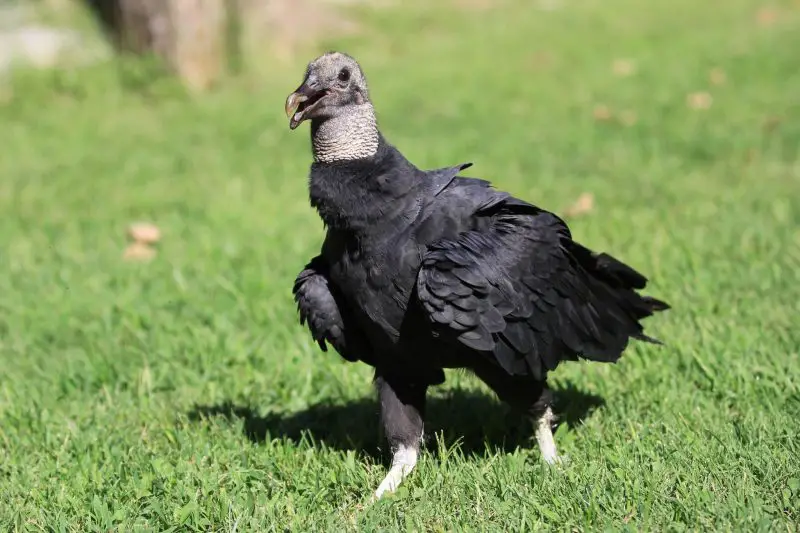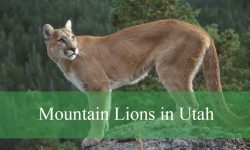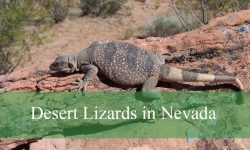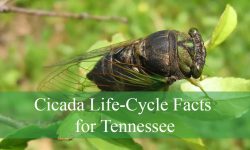Vultures are an unmistakable presence across West Virginia’s mountain slopes, rural roadsides, river valleys, and farm edges. They drift overhead on wide, steady wings, gliding effortlessly in rising thermals that form above the Appalachian ridges. Their appearance often brings mixed feelings—part curiosity, part unease—but few animals play a more essential role in keeping the state’s landscapes clean and balanced.
West Virginia is home primarily to two scavenging vulture species: the turkey vulture and the black vulture. Both are highly adaptable birds, able to detect and consume carrion in ways that many people never fully notice. Their behaviors shift with season, temperature, topography, and food availability. Over time, they’ve developed strategies that help them locate food quickly while minimizing energy use and avoiding dangerous rivals.
Despite their reputation as grim cleanup crews, vultures follow surprisingly specialized routines. Their scavenger habits are shaped by sharp sensory abilities, social cooperation, and environmental cues hidden within the hills and valleys. This article explores eight little-known scavenger behaviors that define how vultures survive in West Virginia.
1. They rely heavily on soaring to conserve energy while searching for food

One of the most important scavenger behaviors of vultures in West Virginia involves how they move through the sky. Instead of constant flapping, vultures glide on rising columns of warm air known as thermals. This allows them to cover long distances without exhausting themselves.
The rugged terrain of the state creates dependable thermals, especially on sunny mornings as slopes begin to warm. Vultures use these updrafts to climb high above the landscape, giving them a wide view of forests, fields, and roadways below. Their slow, circling flight is more than graceful—it’s efficient. Searching for food from a high vantage point increases the chance of spotting carcasses, predator activity, or other vultures already feeding.
This energy-saving strategy is one reason vultures can spend large portions of the day in the air. They maximize visibility while minimizing calorie use, allowing them to survive long intervals between feedings.
2. Turkey vultures find food by smell, while black vultures rely more on sight
Although both species share the same scavenger niche, turkey and black vultures approach the search for food differently. Turkey vultures possess one of the strongest senses of smell among North American birds. They can detect faint chemical signals from decomposing animals, even when the carcass is hidden under forest canopy.
Black vultures, on the other hand, do not have the same olfactory ability. Instead, they rely heavily on sight and social cues. They often watch turkey vultures from above and follow their movements. When turkey vultures descend toward a food source, black vultures quickly join.
This partnership comes with tension. Black vultures are more aggressive and often take over feeding sites once turkey vultures locate them. The interaction demonstrates how sensory differences shape scavenger behavior, resulting in a complex and sometimes competitive relationship across West Virginia’s ecosystems.
3. Vultures use group feeding to reduce individual risk
Carrion can attract many competitors, including coyotes, foxes, raccoons, and even domestic dogs. Vultures minimize danger by feeding in groups. Their social nature provides protection and increases vigilance, especially in open areas like fields, pastures, and road edges.
Black vultures are particularly known for their group cooperation. Unlike turkey vultures, which tend to feed alone or in loose groups, black vultures often arrive in coordinated clusters. Their bold temperament allows them to feed quickly and assertively. Turkey vultures, by comparison, remain cautious and may wait until the scene feels safer.
This group behavior also allows vultures to approach larger carcasses that might be too risky for a single individual. Multiple vultures can keep watch in several directions while others feed, creating a rotating system that helps prevent ambushes from ground predators.
4. They scout roadways and river corridors for easy food sources
West Virginia’s landscape naturally funnels wildlife along predictable paths—ridge lines, riverbanks, forest clearings, and especially road corridors. These areas often produce roadkill or stranded fish and mammals after flooding, making them reliable feeding zones for vultures.
Vultures learn these patterns over time. It’s common to see them perched on guardrails, utility poles, or bare branches overlooking highways and rural roads. From these elevated positions, they monitor traffic movement and scan for fresh carcasses.
River corridors offer similar opportunities. Heavy rains or rapid snowmelt can leave behind dead fish or mammals along muddy banks, especially in low-lying stretches of the Kanawha, Monongahela, Ohio, and New River systems. Vultures frequently patrol these edges during warmer months, taking advantage of seasonal surges in food availability.
5. Their feeding hierarchy depends on species, boldness, and carcass type
Not all vultures carry the same authority at a feeding site. A social hierarchy forms quickly when several birds arrive at the same carcass. Black vultures often dominate because of their assertive behavior. They approach carcasses more confidently and are known to push turkey vultures aside, especially when the food is exposed and easy to access.
Turkey vultures usually wait on the edges until the commotion settles. Their gentler approach does not mean they are less capable; they simply prefer to avoid direct confrontation. However, turkey vultures have an advantage with carcasses that require precision. Their beaks are more adapted to opening hides, making them valuable when feeding begins on animals with tough skin.
Over time, both species settle into roles that maximize efficiency. Black vultures exploit speed and boldness, while turkey vultures use their agility and adaptability to take advantage of the feeding window that follows.
6. Vultures avoid spoiled or contaminated carcasses with surprising accuracy
Although vultures feed on decaying animals, they rarely consume carcasses that are too far decomposed or contaminated. They have evolved digestive systems strong enough to process bacteria, including botulism and anthrax strains, but they still avoid food that signals chemical contamination or unnatural decay.
Their avoidance behavior comes from a combination of sight, smell, and learned experience. If a carcass appears unnaturally discolored or if surrounding vegetation looks chemically affected, vultures generally keep their distance. In West Virginia, this is particularly beneficial near agricultural fields, road maintenance sites, or areas where pesticides and herbicides may be used.
This selectiveness helps vultures protect themselves while indirectly protecting entire scavenger communities. Many mammals, unable to detect chemical residues as effectively, rely on vultures’ absence as an indicator that a carcass might be unsafe.
7. They thermoregulate through posture and sun exposure before feeding
Before searching for food, vultures frequently assume a characteristic sunning posture: wings spread, feathers slightly flared, body angled toward the sun. This behavior is especially common during cool mornings in West Virginia’s mountains, where temperatures fluctuate dramatically with elevation.
The posture serves several purposes. Sunlight warms their wing muscles, preparing them for extended soaring. UV exposure also helps kill bacteria on their feathers, reducing risk after feeding on decaying animals. The long-winged stance may look ominous, but it’s a practical routine that primes them for the day’s scavenger activities.
This thermoregulation is essential for vultures’ energy conservation strategy. A warmed body allows smoother flight and more efficient searching, giving them an advantage over predators and competing scavengers that rely heavily on ground movement.
8. They return to reliable feeding areas year after year
Vultures possess strong site fidelity when it comes to dependable feeding grounds. Once they identify areas with consistent carrion availability—farms with livestock losses, forested valleys where deer fatalities occur during winter, or busy highway stretches—they revisit these locations regularly.
This learned pattern creates annual rhythms in vulture movement across West Virginia. Some areas see increases in activity during hunting season, when field-dressing remnants attract scavengers. Other locations experience surges after severe winters when natural mortality rises in deer populations.
Generations of vultures learn these patterns by observing older birds. Over time, entire groups develop shared knowledge of the best foraging sites, allowing them to thrive in landscapes where food sources change with season and terrain.
Frequently Asked Questions
Do vultures in West Virginia attack live animals?
No. Turkey vultures never attack live prey. Black vultures may occasionally target newborn or weakened livestock, but such cases are infrequent.
Why do vultures spread their wings in the morning?
They warm their feathers, kill bacteria, and prepare their flight muscles before soaring.
Are vultures beneficial to West Virginia ecosystems?
Yes. They remove carrion quickly, reducing disease spread and keeping landscapes cleaner.
Why do I see vultures near highways?
Roadkill creates predictable feeding opportunities. Vultures learn to patrol these areas regularly.
Do vultures migrate through West Virginia?
Turkey vultures show partial migration, while black vultures are mostly resident. Seasonal movement depends on food availability.
Are black vultures more aggressive than turkey vultures?
Yes. Black vultures often dominate feeding sites, while turkey vultures tend to remain cautious.
Do vultures have a good sense of smell?
Turkey vultures do. Black vultures rely mainly on sight and social cues.
Are vultures protected?
Yes. Both species are protected under the Migratory Bird Treaty Act.
Can vultures damage property?
Black vultures may occasionally damage shingles, rubber seals, or tarps when investigating objects, but this is not common everywhere.
Why do vultures gather in large groups at dusk?
They use communal roosts for warmth, safety, and information-sharing about potential feeding areas.
Final Thoughts
Vultures are often misunderstood, yet they play a crucial role in West Virginia’s ecological balance. Their scavenging behaviors—shaped by sensory precision, group cooperation, and careful energy management—allow them to clean the landscape in ways no other animals can replicate.
Watching them soar above mountain ridges or gather at evening roosts offers a glimpse into a system honed by evolution and perfectly suited to the state’s rugged terrain. Understanding how they locate food, interact socially, and navigate the challenges of their environment reveals just how vital they are to the health of West Virginia’s forests, farmlands, and river valleys.






